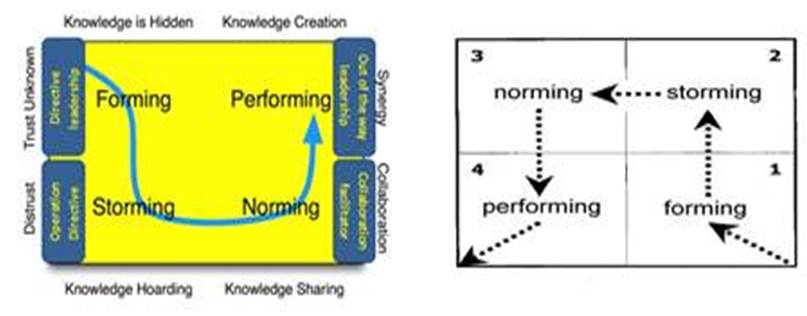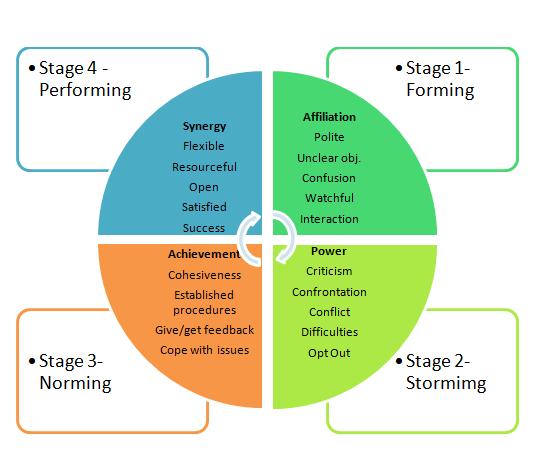POSTED ON Thuresday, 25 Aug 2016, 15:00 BY Saud Al Bahri
- Problem Definition.
OOCEP_PMI 2016 program was initiated to develop project management competency among 10 members with different backgrounds and level of experience. The program kicked off with a 5 days intensive face to face session. The main objective of this essay to program is get a clear understanding on the team’s behavioral development situation following with the recommended leader style that will help building a high performing team.
- Feasible Alternative.
Tuckman’s model (team work theory) explains that as the team develops maturity and ability, relationships establish, and the leader changes leadership style. Beginning with a directing style, moving through coaching, then participating, finishing delegating and almost detached.

Tuckman Stages of group development
- Development of the Outcome for Alternative
As illustrated in the above diagram. There are various stages that the team goes through in terms of the level of collaboration and hence the required leadership style. Below is a brief description of each stage:

Donald Clark developed a survey of 32 questions which were answered by the team getting the following results:
| Average | 25 | 21 | 29 | 32 |
| Maximum | 28 | 26 | 32 | 37 |
| Minimum | 22 | 17 | 25 | 28 |
| Mean | 25.0 | 21.0 | 28.8 | 32.2 |
| Standard deviation | 6 | 9 | 7 | 9 |
| Sigma | 1.00 | 1.50 | 1.17 | 1.50 |
| Standard variance | 1.00 | 2.25 | 1.36 | 2.25 |
| P85 | 31 | 30 | 36 | 42 |
| * Find the z-score z =( value − mean ) / standard deviation |
||||
- Selection of Criteria.
Delphi technique with P85 was used to analyze the outcomes of the survey. Clearly; the team is staying in in the Performing Stage.
- Data Analysis
Getting this result will tell the team that they are in the stage that they are work collaboratively, care about their success as a group, their identity is become very clear and they are interdependent. “Performing Stage”
- Selection of the Preferred Alternative.
Team members have the ability to deliver the project deliverables on time with the accepted level of performance. In addition, they are competent, self-directed which means they are in a position to accept some delegated responsibilities from leader and able to handle the decision-making process without supervision.
- Performance Monitoring and the Post Evaluation of Result.
Based on the above, the best “Leadership Style” recommended for this team is “Delegating leaders”; offer a low-supportive and low-directive environment, delegate the tasks to the team members and focus more on developing the team member. This style will allow the members to extend themselves and their abilities fully.
- References:
- The Delphi Technique: Making Sense Of Consensus , Chia-Chien Hsu, The Ohio State University & Brian A. Sandford, Oklahoma State University, Retrieved August 21, 2016, from http://pareonline.net/pdf/v12n10.pdf
- Tuckman’s Team Development Model, Retrieved August 21, 2016 from https://salvos.org.au/scribe/sites/2020/files/Resources/Transitions/HANDOUT_-_Tuckmans_Team_Development_Model.pdf
- Chapter 6: The Normal Distribution Dr. Janet Winter, jmw11@psu.edu, Retrieved August 21, 2016, from


Now you’ve got it, Saud!!!! Nice work this time around……
LikeLike